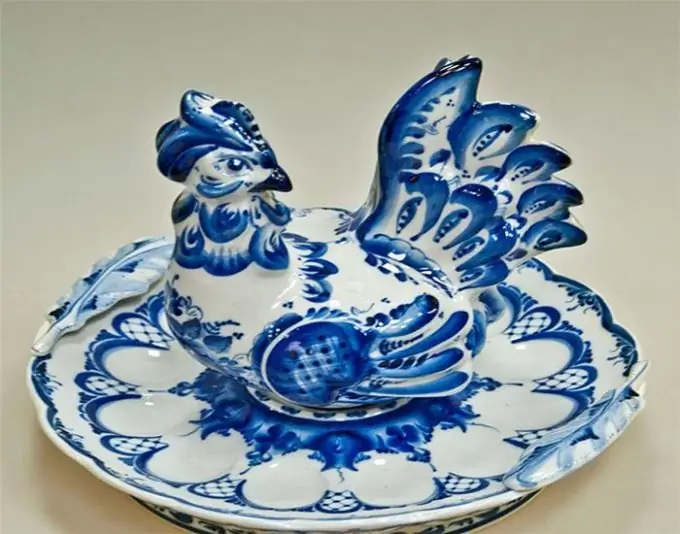- Author Antonio Harrison [email protected].
- Public 2023-12-16 07:44.
- Last modified 2025-01-22 21:44.
Gzhel is an old pottery district, which includes 27 villages. It is located 60 km from Moscow on the banks of the Gzhelka River. The richest deposits of clay have been discovered there, so potters have lived there since ancient times. Amazingly beautiful, blue and white ceramics from Gzhel have long won world fame.

The first mentions of Gzhel were found in written sources for 1339. Judging by the information found, Gzhel was one of the profitable volosts and was the property of the great Moscow princes and tsars. Beginning in the 16th century, potters from Gzhel began to bring the remaining stocks of ceramic dishes to Moscow, as well as clay for potters from the Yauzskaya Sloboda. They also visited local fairs, where they got acquainted with paintings by masters from different parts of Russia.
In the 70s - 80s. In the 18th century, Gzhel turned into a Russian center for the manufacture of majolica. Jugs, ferments and kumgans made here have become very popular throughout the country. Some of the items were of an emphatically decorative character. For example, a jug could be made in the form of a two-headed eagle, a mug for kvass - in the form of a lion with an open mouth. In addition to tableware, craftsmen created funny figures of people and animals. In the painting of the Gzhel majolica, mainly 4 colors were used: blue, green, yellow and brown. The products depicted fabulous towers and magical herbs, rural landscapes and scenes from everyday life, birds and animals.
Most researchers believe that the tradition of painting products on a snow-white background with cobalt, which gives blue color after firing, appeared in Gzhel under the influence of blue-white Chinese porcelain. In the 19th century, Gzhel switched to the production of semi-faience, which began to be painted with cobalt and covered with transparent glaze. True, unlike porcelain, semi-faience is a rather coarse material from which thick-walled products are made. There are fewer landscapes in the painting, floral ornaments combined with geometric elements predominate.
In the second quarter of the 19th century, thanks to the use of new materials and the improvement of the ceramic mass, the Gzhel craftsmen began to create products from thin-walled faience and porcelain, decorated with the now traditional plant-geometric ornament.
Today the word "gzhel" evokes associations with fabulous beauty and sophisticated harmony of amazing blue and white products. Gzhel artists create dishes of traditional shapes, decorating them with stucco figurines. Although the products retain their functionality, they are used primarily for decorative purposes. In addition, the tradition of making small sculptures - individual figures of people and animals and whole decorative compositions - does not stop.






